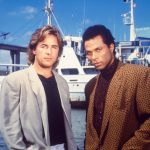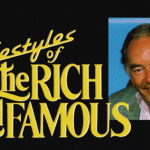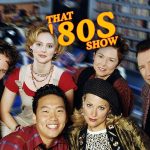The pull of The Wonder Years started with the first beat of the opening credits. As soon as Joe Cocker’s distinct and powerful voice sang out, you knew exactly what you were in for.
Try with a little help from my friends…
Those famous lyrics combined with the grainy, home-movie-style video montage of living in suburban America in the 1960s, made it clear that this was a show that was going to be heavy on nostalgia and family.
It was a strong hook that spoke to both young people looking to relate to the main character’s coming of age story, as well as their parents, who grew up at the time the show was set in.

The latter group was especially important in the late 1980s, when The Wonder Years debuted. Then pushing 40, the Baby Boomers were eager to absorb any and all programming that focused on their generation and the seminal period of American history that they lived through. Nostalgia always sells, but it sold particularly well in the late ’80s.
If The Wonder Years had just been a story about a boy growing up in the late 60s, it would had found an audience. However, what made the show so iconic was the depth of the storytelling that it undertook. This wasn’t a surface, laugh track show. No, it was something more.

The Wonder Years debuted on ABC on March 15, 1988. Right away, that spring debut set it apart from most popular shows at the time, which typically were rolled out in the Fall. The pilot episode featured the story of the show’s protagonist Kevin Arnold’s first kiss to his long-time friend Winnie.
The teenage love affair between Kevin and Winnie would be the bedrock of the series, and the couple remains one of television’s most iconic couples.

But, this wasn’t just a teenage love affair show. There’s was depth to everything. Winnie’s brother had been killed in the Vietnam War and that grief hung over the show.
The fear of being drafted was very much part of Kevin’s older brother, Wayne’s, arch.
Kevin’s father, Jack, represents the complicated relationship the previous generation had with the counterculture ’60s and, to counter that viewpoint, Kevin’s older sister, Karen, was very much part of the hippie culture of the time.
Every character had a purpose and role in moving the plot forward, no matter how small. That set the show apart from other programs at the time.
Even the way it was filmed — single camera as opposed to multi-camera in a static set — was new to the sitcom genre in the ’80s and helped The Wonder Years stand out from the crowd.
Those factors are why many critics today will point to the show as being not just quality entertainment, but hugely influential in the history of television.
In many ways, The Wonder Years is a show that is representative of two different eras at at once — the decade it was made and decade it was set in. However you think of it, it remains a worthwhile and rich viewing experience to this day.






No Comments